Hebe (6) fragments evolution
[ Back to previous page ]
A typical evolution of asteroid fragments ejected from asteroid (6) Hebe
and driven under both diurnal and seasonal Yarkovsky thermal effect is
displayed in the following graph a(t).
The fragments have thermal properties of regolith covered bodies.
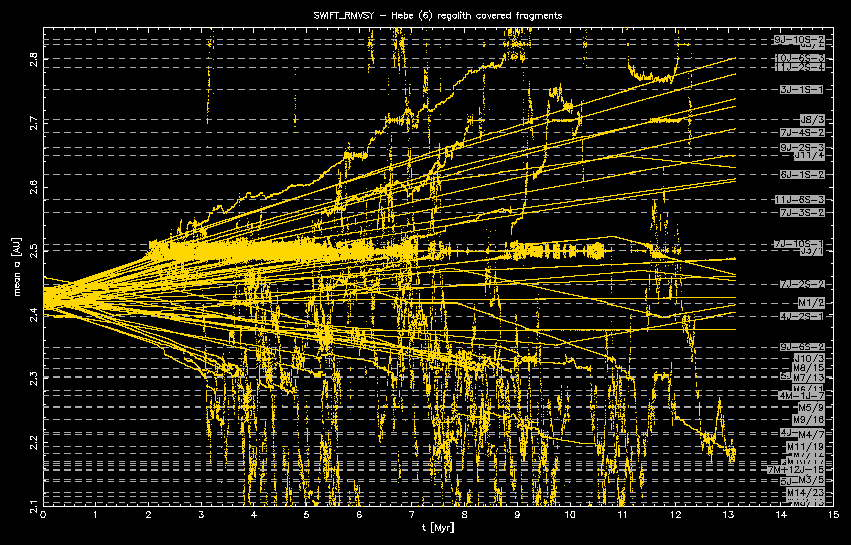
Hereafter we present results of older integrations of motion of 12 fragments
from asteroid Hebe (6). The fragments are regolith covered and they are
affected by the diurnal Yarkovsky effect without any reorientation of the spin
axis. The common thermal parameters for all fragments are as follows:
- density rho = 3500 kg · m-3
- surface density rhos = 1500 kg · m-3
- thermal conductivity K = 0.005 W · kg-1 · K-1
- specific heat C = 680 J · kg-1 · K-1
- surface albedo A = 0
There are two graphs for each element of orbit: the first one for initial obliquity dzeta = 0°
and the second for dzeta = 180°. The radius R varies from 0.1 m upto 50 m.
The white line indicates the initial orbital elements (2000.0) for asteroid Hebe (6)
(taken from MPC 24219):
- a = 2.4247741 AU
- e = 0.2018431
- i = 14.77118°
- peri = 239.07195°
- node = 138.88979°
- M = 211.60690°, epoch JDT 2450800.5
The evolution was calculated by swift_rmvsy program on a P100/16M
computer, f2c/gcc compiler. After 33 Myr integration 10 from 12
test particles were discarded, they were further 1000 AU from the Sun.
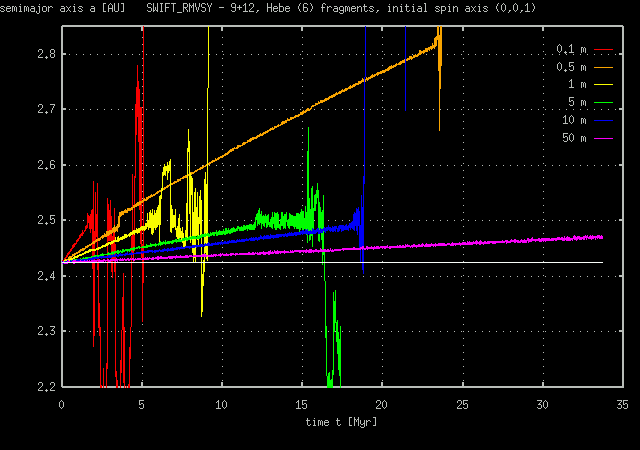
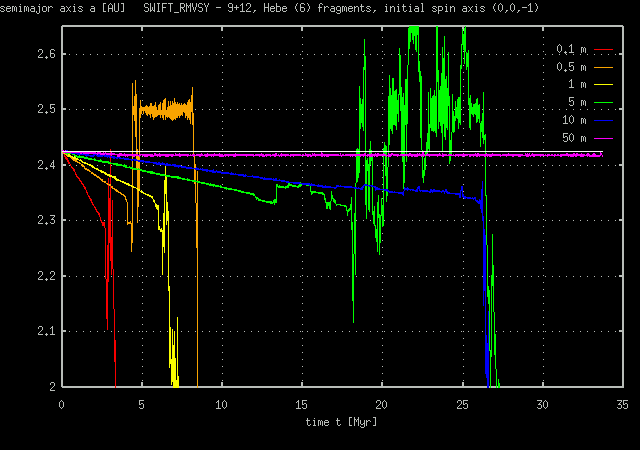
| Semimajor axis a [AU] as a function of time t [d]. The
smaller body, the stronger is Yarkovsky diurnal effect. The linear drift rate
of semimajor axis is approximately da = +0.012 AU ·
My-1 for R = 1 m fragment.
The right side panel shows the evolution of fragments with oposite
orientation of the spin axis (retrograde rotation), the Yarkovsky diurnal
effects is a drag like. |
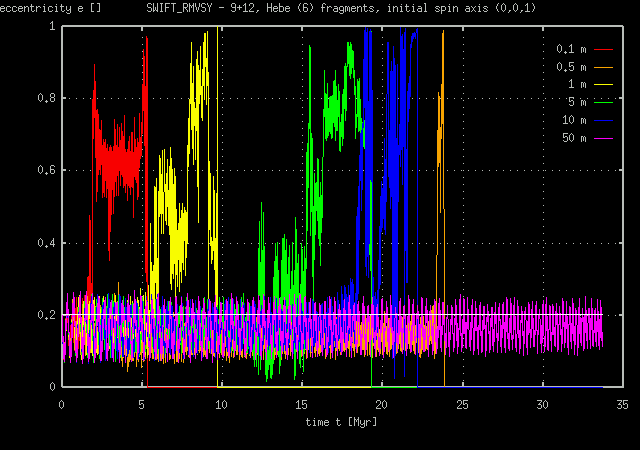
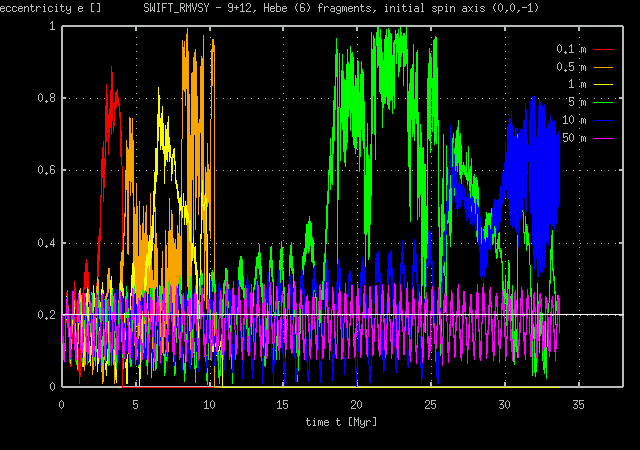
| Eccentricity e [] vs. t [d]. |
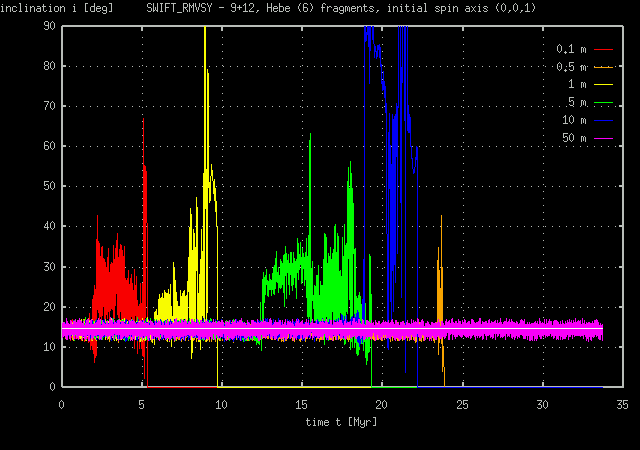
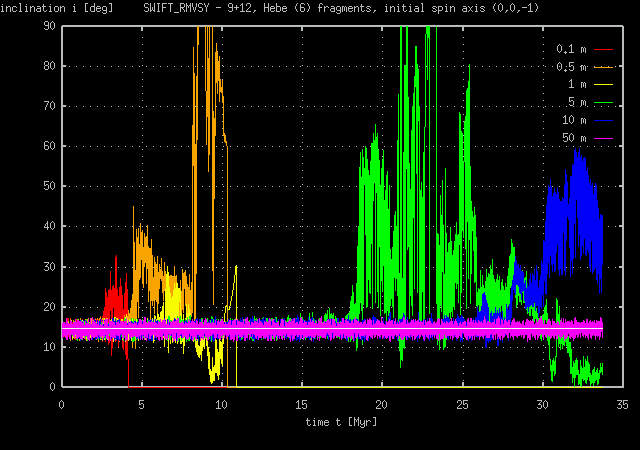
| Inclination i [°] vs. t [d]. |
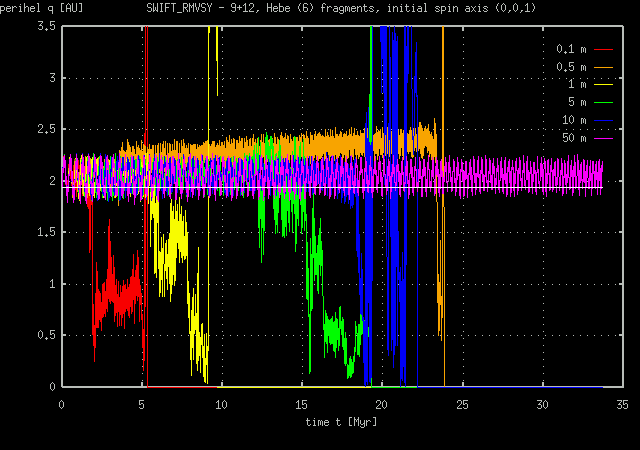
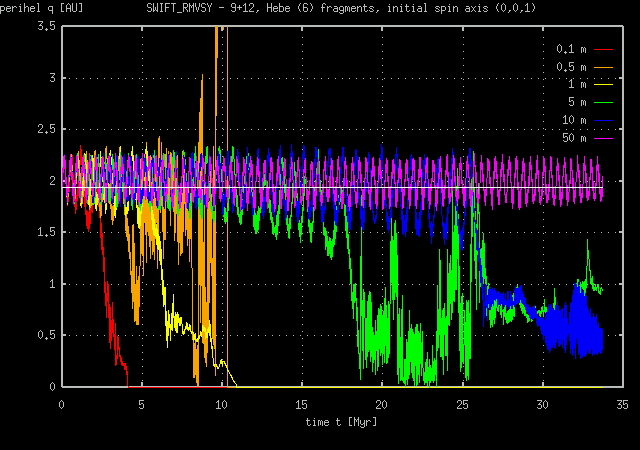
| Perihelium distance q [AU] vs. t [d]. |
Two following pictures show motion of all 12 fragments in (a, e) and
(a, sin i) planes. The borders of main resonances are marked (border of nu6
secular resonance in (a, e) is for sin i = 0).
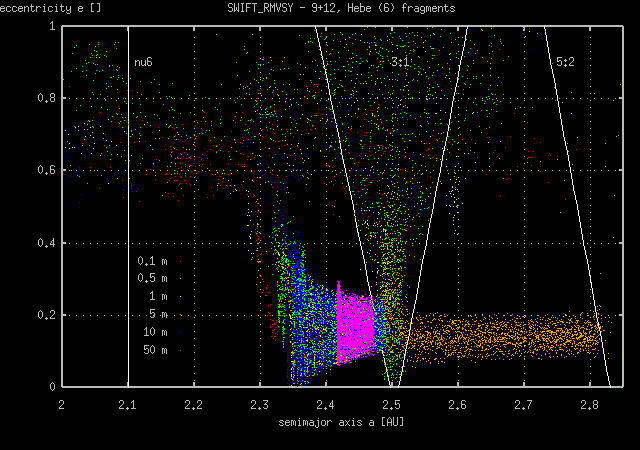
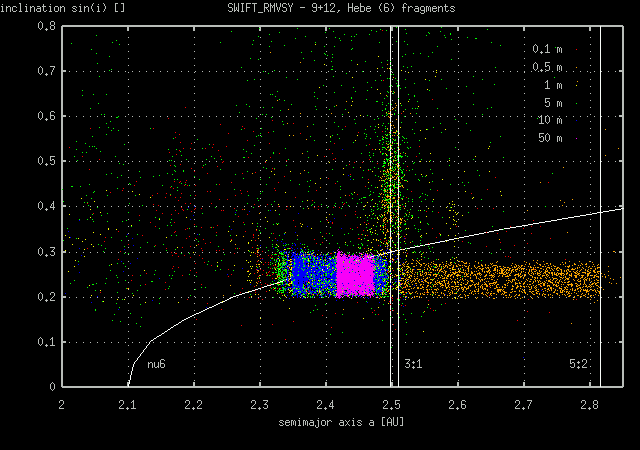
Miroslav Broz, miroslav.broz@usa.net, last updated May 5th 1999











